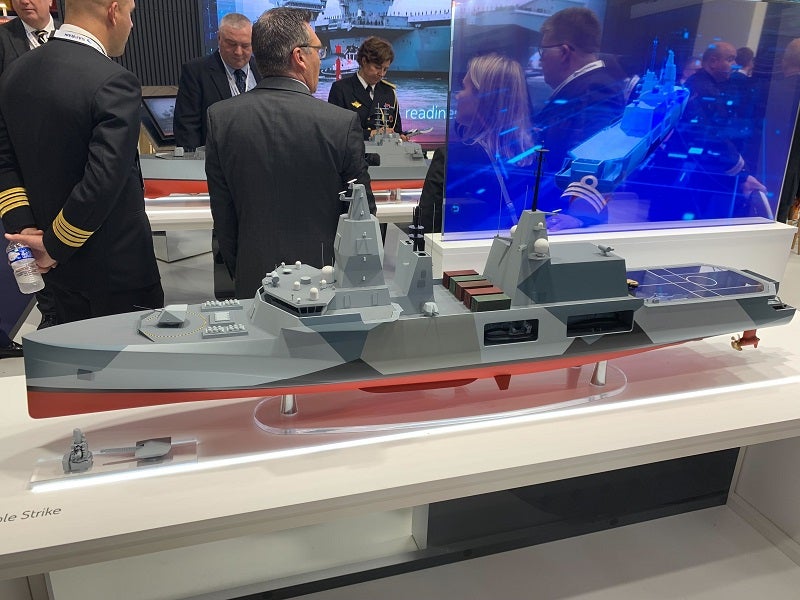
UK defence prime BAE Systems has introduced its Adaptable Strike Frigate (ASF) concept design to European naval market at the Euronaval exhibition at Paris Le Bourget on 18 October, with the platform itself centred around modularity and autonomous systems.
Chief among its target programmes will be the UK Type 32 effort, which entered the concept phase on 21 September this year. BAE Systems will seek to deliver an outline business case, setting out preliminary thoughts regarding the ASF, in parallel with the Multi-Role Support Ship programme.
“We see a requirement for system deployment globally,” said Steve Hart, head of UK business development for Maritime and Land at BAE Systems.
Fluctuations in international financial sustainability are a consideration during the design process, and to balance affordability with the needs of the ship, Hart estimates the ship’s size to be 130m, and to weigh 6000 tons.
“We see autonomous systems entering the battle space and bringing additional complexity, which can only be countered with additional mass,” added Hart, describing the changing threat environment and potential for global deployment as factors driving the design process towards a modular framework.
“We looked at how you deliver that flexibility, complexity, to the battle space, to achieve warfare effect, but also how you rapidly change the role of the platform.”
The ASF is designed to operate as part of a littoral response group, or independently, as circumstances demand. The containerised mission modules enable rapid reconfiguration for operations.
“We’re talking about a protean force that has a much more flexible function, with effect delivered from autonomous systems, and situational awareness on those platforms being greatly extended through the use of desegregated sensors,” said Hart.
The ASF has been optimised for use with autonomous systems including autonomous underwater vehicles, and uncrewed surface vehicles and uncrewed aerial vehicles. The command-and-control structures are designed to be able to operate effectively with different integrated systems, requiring a new approach to warship design.
“That’s required us to think both about the digital backbone of the operation, and the management of data on board,” Hart said. “So, you’re exploiting the ships weapons and sensors, but you’re also exploiting the data that’s arrived from your autonomous assets.”
Modularity at the core
BAE Systems has been working closely with Microsoft to develop a cloud ready mission system that can integrate into the multi-domain force interchangeable with NATO and coalition partners.
“Were I to change the role of my platform, the software and decision-making side of the platform will need to be changed. So, if you change your modular construct, and the role of your platform itself – maybe change it to be more strike orientated or more amphibiously orientated – you will need to change the kind of tools that are on board; you will need to change the decision networks that are on board,” explained Hart.
As the ASF is still in the concept phase, any build strategy would be driven by the requirements of the programme, and the location of the build site is not yet determined, but BAE Systems has work guaranteed in its Glasgow yards until the mid-2030s.



